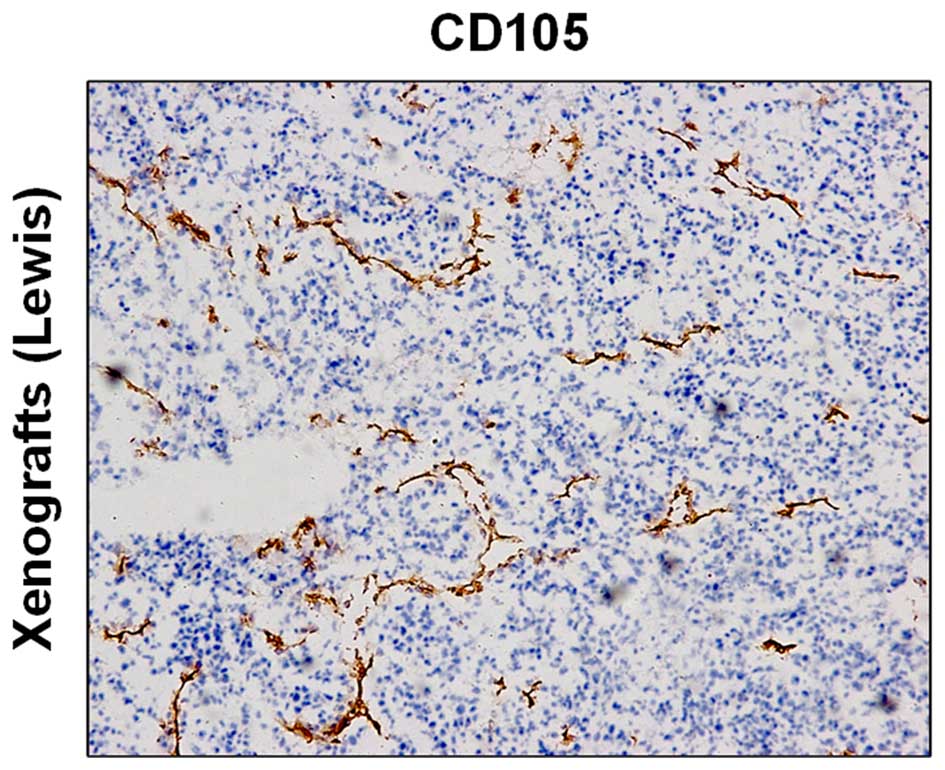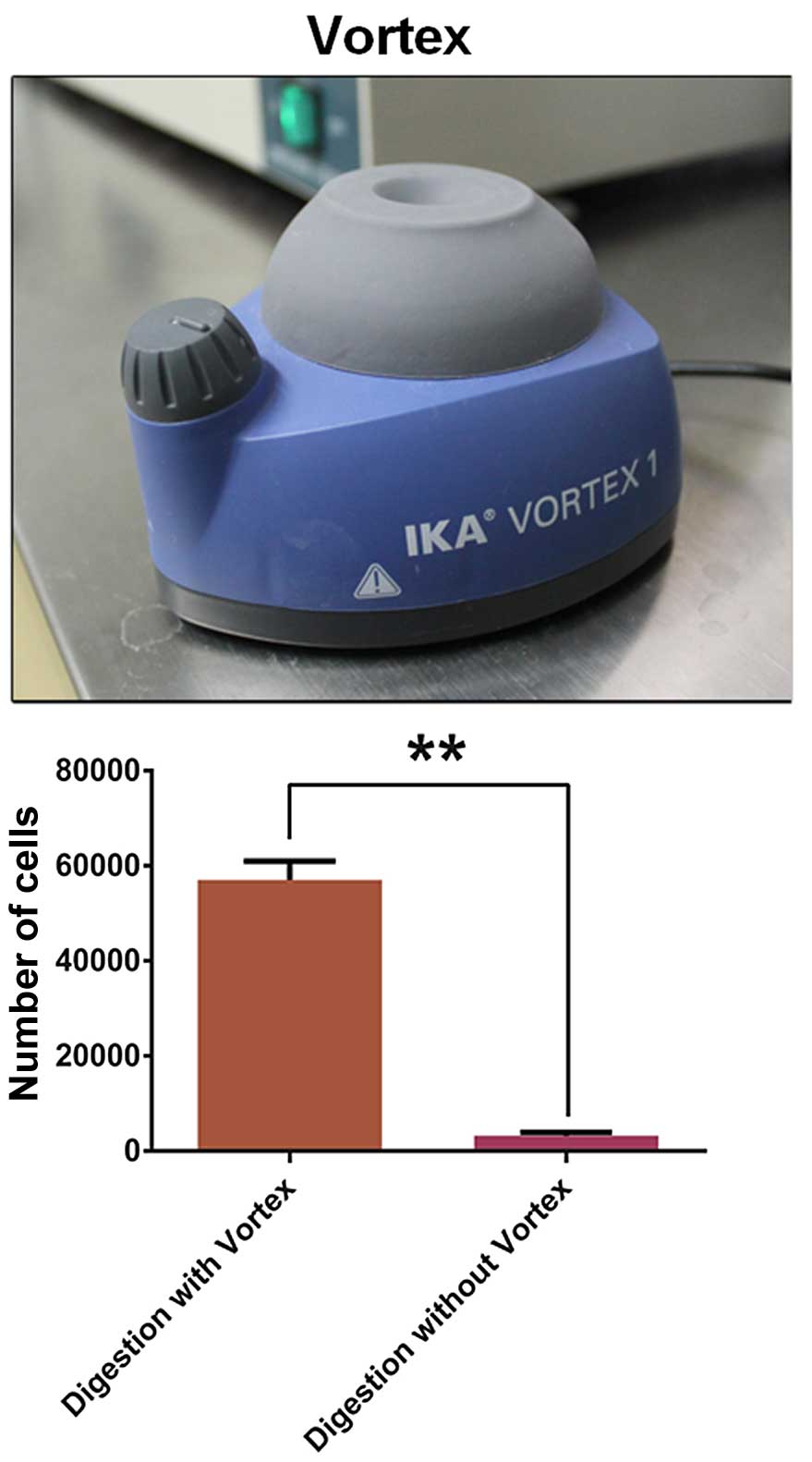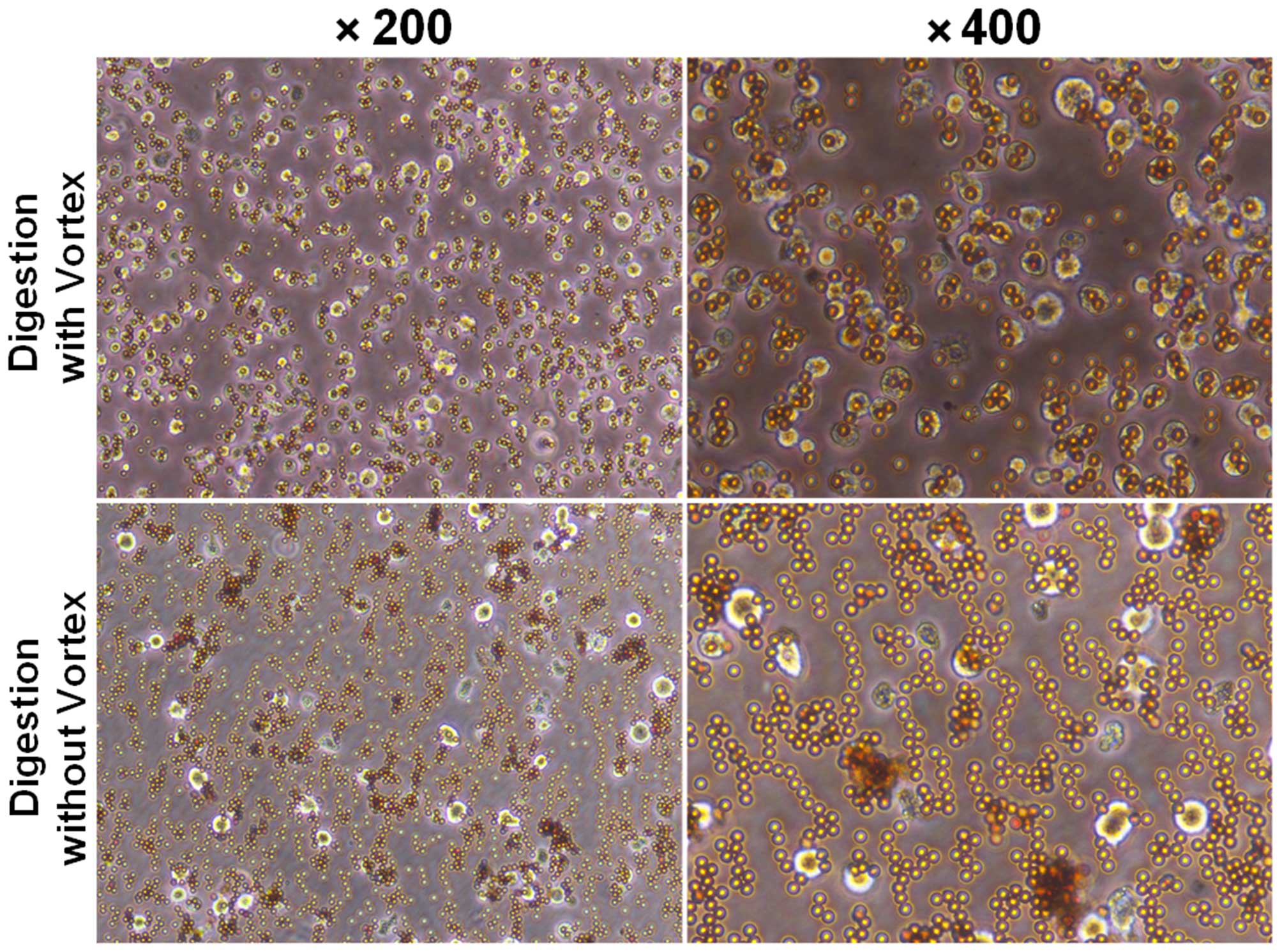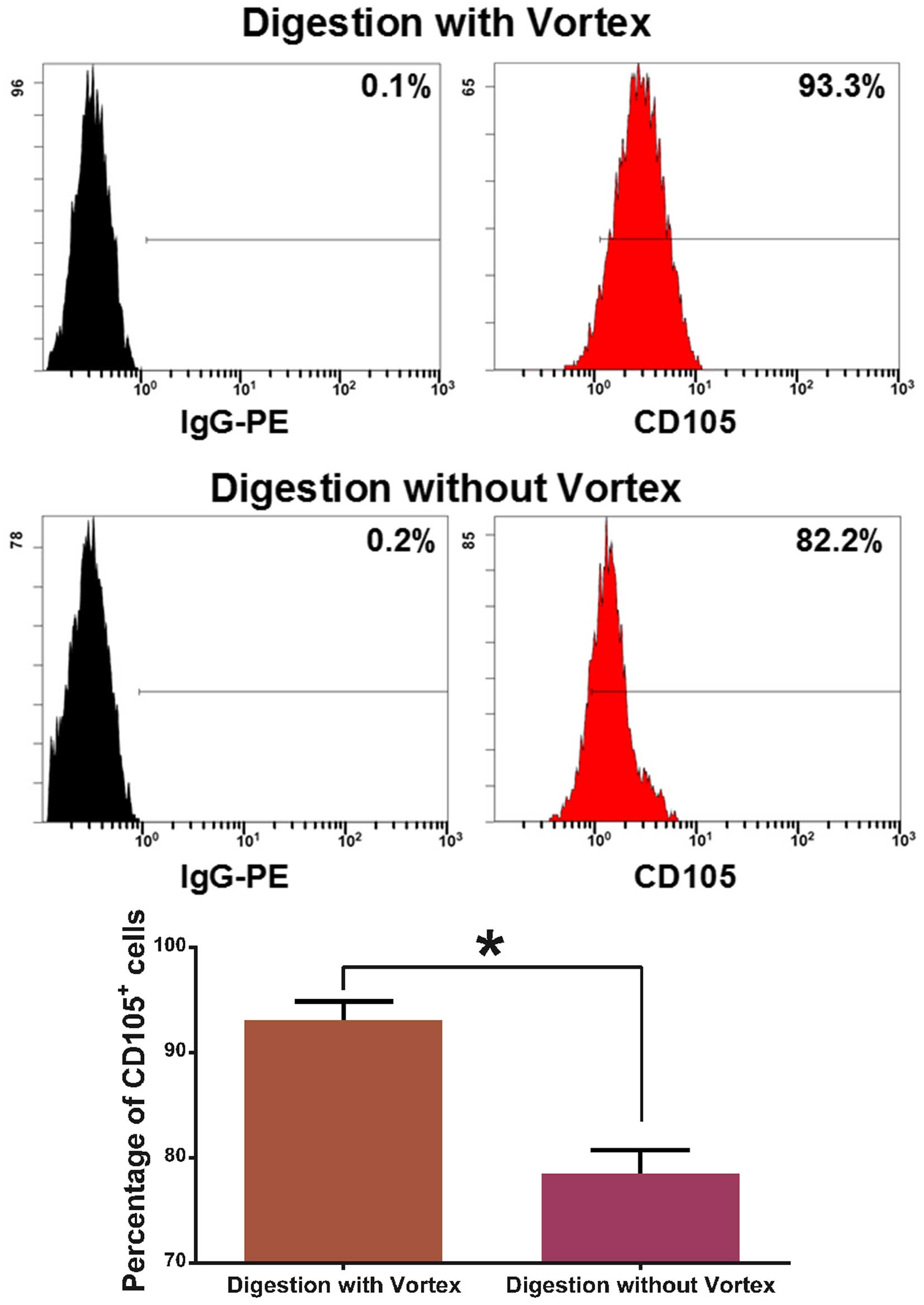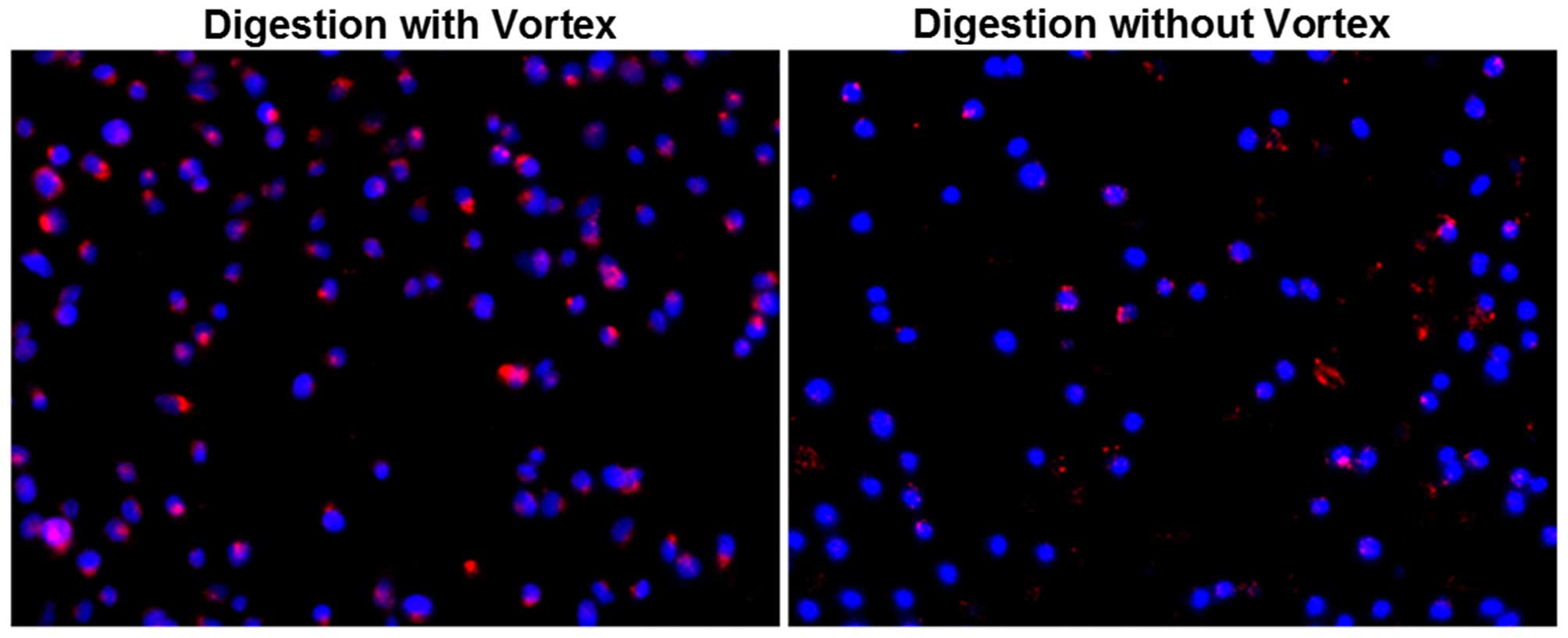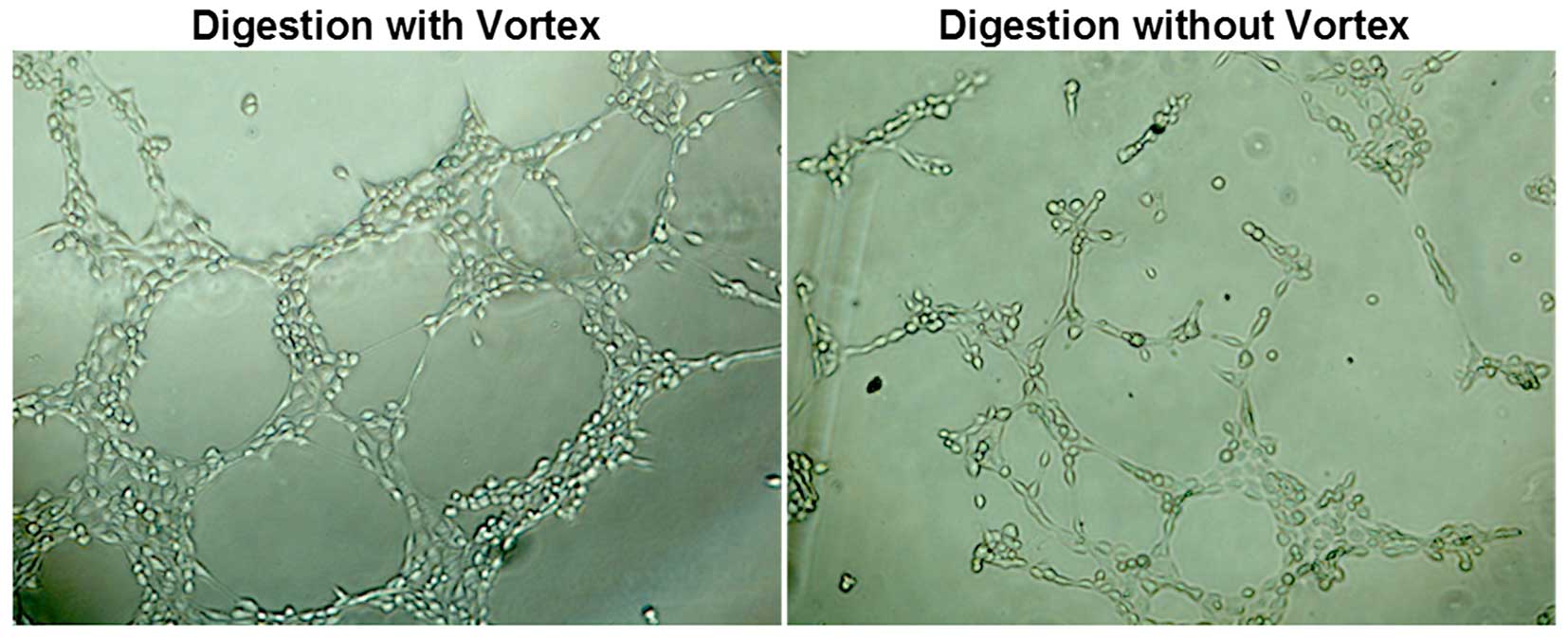|
1
|
Folkman J: Tumor angiogenesis. Adv Cancer
Res. 43:175–203. 1985. View Article : Google Scholar : PubMed/NCBI
|
|
2
|
Holzer TR, Fulford AD, Nedderman DM,
Umberger TS, Hozak RR, Joshi A, Melemed SA, Benjamin LE, Plowman
GD, Schade AE, et al: Tumor cell expression of vascular endothelial
growth factor receptor 2 is an adverse prognostic factor in
patients with squamous cell carcinoma of the lung. PLoS One.
8:e802922013. View Article : Google Scholar : PubMed/NCBI
|
|
3
|
Francescone R, Ngernyuang N, Yan W,
Bentley B and Shao R: Tumor-derived mural-like cells coordinate
with endothelial cells: Role of YKL-40 in mural cell-mediated
angiogenesis. Oncogene. 33:2110–2122. 2014. View Article : Google Scholar :
|
|
4
|
Heuser LS and Miller FN: Differential
macromolecular leakage from the vasculature of tumors. Cancer.
57:461–464. 1986. View Article : Google Scholar : PubMed/NCBI
|
|
5
|
Gerlowski LE and Jain RK: Microvascular
permeability of normal and neoplastic tissues. Microvasc Res.
31:288–305. 1986. View Article : Google Scholar : PubMed/NCBI
|
|
6
|
Hori K, Suzuki M, Tanda S and Saito S: In
vivo analysis of tumor vascularization in the rat. Jpn J Cancer
Res. 81:279–288. 1990. View Article : Google Scholar : PubMed/NCBI
|
|
7
|
Griffioen AW and Molema G: Angiogenesis:
Potentials for pharmacologic intervention in the treatment of
cancer, cardiovascular diseases, and chronic inflammation.
Pharmacol Rev. 52:237–268. 2000.PubMed/NCBI
|
|
8
|
Shi J, Wan Y, Shi S, Zi J, Guan H, Zhang
Y, Zheng Z, Jia Y, Bai X, Cai W, et al: Expression, purification,
and characterization of scar tissue neovasculature endothelial
cell-targeted rhIL10 in Escherichia coli. Appl Biochem Biotechnol.
175:625–634. 2015. View Article : Google Scholar
|
|
9
|
Cai G, Satoh T and Hoshi H: Purification
and characterization of an endothelial cell-viability maintaining
factor from fetal bovine serum. Biochim Biophys Acta. 1269:13–18.
1995. View Article : Google Scholar : PubMed/NCBI
|
|
10
|
Behdani M, Zeinali S, Karimipour M,
Khanahmad H, Asadzadeh N, Azadmanesh K, Seyed N, Baniahmad SF and
Anbouhi MH: Expression, purification, and characterization of a
diabody against the most important angiogenesis cell receptor:
Vascular endothelial growth factor receptor 2. Adv Biomed Res.
1:342012. View Article : Google Scholar
|
|
11
|
van Beijnum JR, Dings RP, van der Linden
E, Zwaans BM, Ramaekers FC, Mayo KH and Griffioen AW: Gene
expression of tumor angiogenesis dissected: Specific targeting of
colon cancer angiogenic vasculature. Blood. 108:2339–2348. 2006.
View Article : Google Scholar : PubMed/NCBI
|
|
12
|
St Croix B, Rago C, Velculescu V, Traverso
G, Romans KE, Montgomery E, Lal A, Riggins GJ, Lengauer C,
Vogelstein B, et al: Genes expressed in human tumor endothelium.
Science. 289:1197–1202. 2000. View Article : Google Scholar : PubMed/NCBI
|
|
13
|
Joshi S, Singh AR, Zulcic M and Durden DL:
A macrophage-dominant PI3K isoform controls hypoxia-induced HIF1α
and HIF2α stability and tumor growth, angiogenesis, and metastasis.
Mol Cancer Res. 12:1520–1531. 2014. View Article : Google Scholar : PubMed/NCBI
|
|
14
|
Ostapoff KT, Awasthi N, Cenik BK, Hinz S,
Dredge K, Schwarz RE and Brekken RA: PG545, an angiogenesis and
heparanase inhibitor, reduces primary tumor growth and metastasis
in experimental pancreatic cancer. Mol Cancer Ther. 12:1190–1201.
2013. View Article : Google Scholar : PubMed/NCBI
|
|
15
|
Nassiri F, Cusimano MD, Scheithauer BW,
Rotondo F, Fazio A, Yousef GM, Syro LV, Kovacs K and Lloyd RV:
Endoglin (CD105): A review of its role in angiogenesis and tumor
diagnosis, progression and therapy. Anticancer Res. 31:2283–2290.
2011.PubMed/NCBI
|
|
16
|
Goumans MJ, Lebrin F and Valdimarsdottir
G: Controlling the angiogenic switch: A balance between two
distinct TGF-b receptor signaling pathways. Trends Cardiovasc Med.
13:301–307. 2003. View Article : Google Scholar : PubMed/NCBI
|
|
17
|
Slevin M, Krupinski J and Badimon L:
Controlling the angiogenic switch in developing atherosclerotic
plaques: Possible targets for therapeutic intervention. J
Angiogenes Res. 1:42009. View Article : Google Scholar : PubMed/NCBI
|
|
18
|
Aird WC: Endothelial cell heterogeneity.
Crit Care Med. 31(Suppl 4): S221–S230. 2003. View Article : Google Scholar : PubMed/NCBI
|
|
19
|
Lehmann I, Brylla E, Sittig D,
Spanel-Borowski K and Aust G: Microvascular endothelial cells
differ in their basal and tumour necrosis factor-alpha-regulated
expression of adhesion molecules and cytokines. J Vasc Res.
37:408–416. 2000. View Article : Google Scholar : PubMed/NCBI
|
|
20
|
Craig LE, Spelman JP, Strandberg JD and
Zink MC: Endothelial cells from diverse tissues exhibit differences
in growth and morphology. Microvasc Res. 55:65–76. 1998. View Article : Google Scholar : PubMed/NCBI
|



